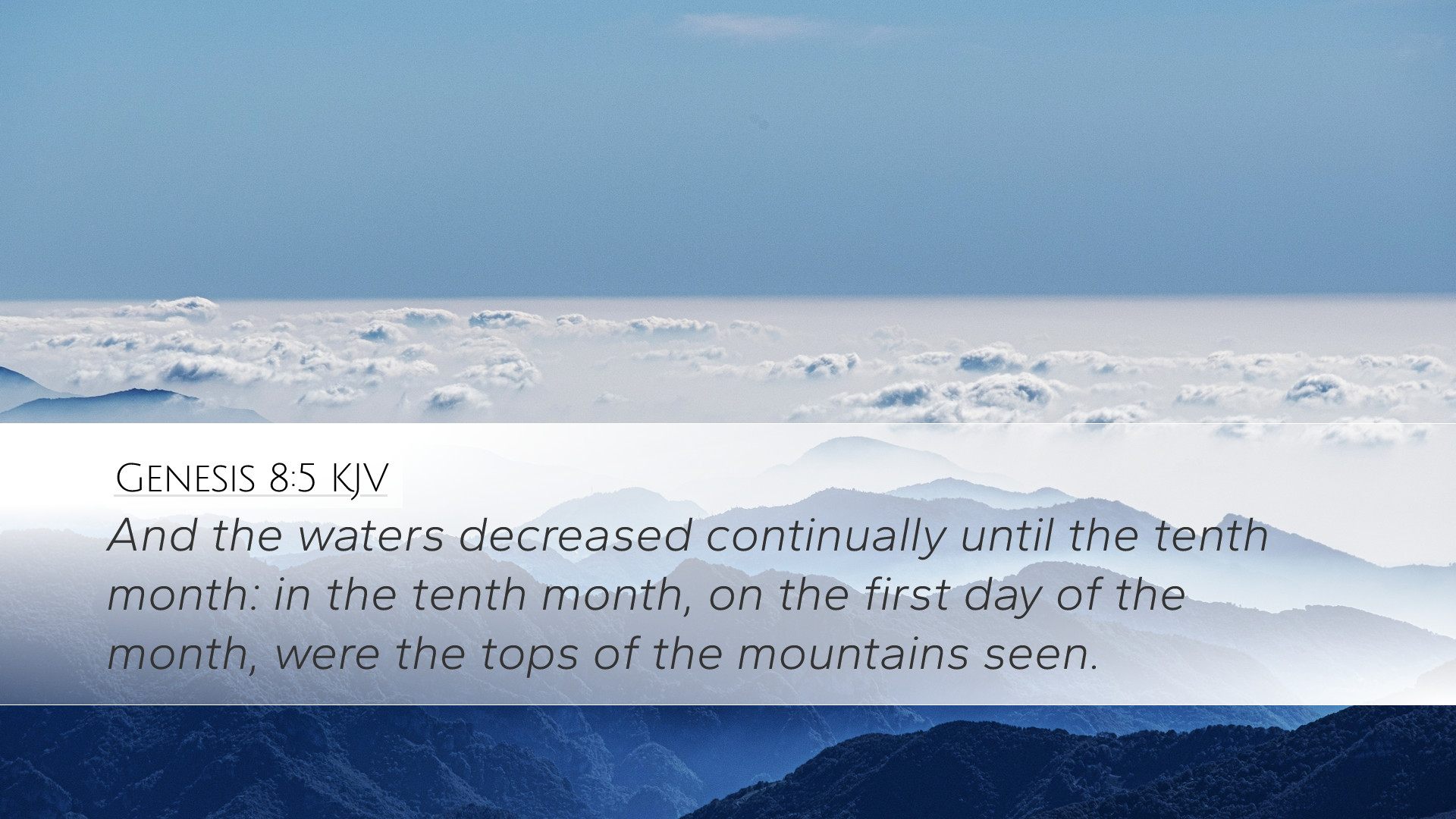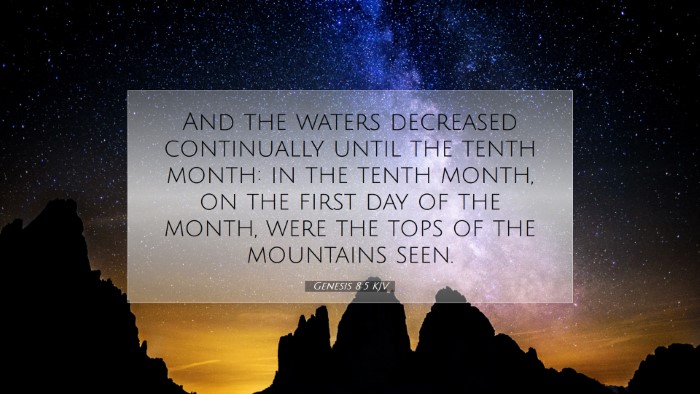Commentary on Genesis 8:5
Bible Verse: "And the waters were abated continually until the tenth month: in the tenth month, on the first day of the month, were the tops of the mountains seen." (Genesis 8:5)
Introduction
Genesis 8:5 reveals the gradual retreat of the floodwaters that engulfed the earth during the time of Noah. This verse marks a significant transition in the post-flood narrative, offering insights into God's providence and the restoration of creation.
Overview of Context
Following the catastrophe of the flood, Genesis 8 chronicles God's promise to Noah and the subsequent recommencement of life upon the earth. This verse provides a temporal marker, illustrating not just the retreat of water but highlighting God’s meticulous involvement in the reestablishment of order.
Commentary Insights
1. The Abatement of Waters
Matthew Henry emphasizes the systematic nature of the flood's retreat, illustrating how the waters were not only receding, but doing so in a controlled manner. This serves as a reminder of God's sovereignty and His ability to govern even the most chaotic situations.
Albert Barnes notes that the phrase "were abated continually" conveys a sense of grace and mercy. It suggests a gradual restoration rather than sudden desolation, inviting reflection on the dispensation of divine mercy in our restorative experiences.
Adam Clarke discusses the scientific implications of the floodwaters abating, indicating a process involving the drainage of waters and the emergence of earth into visibility. His analysis invites readers to appreciate God’s scientific order intertwined with His divine purpose.
The Significance of the Tenth Month
Matthew Henry expounds on the significance of the "tenth month," noting that it was a symbol of completion and the beginning of a new phase. This period indicates that God had a timetable for restoration, reassuring believers that there is divine timing in their own struggles.
In conjunction, Albert Barnes observes that the “first day of the month” signifies a new beginning in God’s plan. The visibility of the mountain tops symbolizes hope and a new horizon after the darkness of judgment, a reflection of the resurrection theme prevalent throughout scripture.
Theological Implications
1. God's Judgment and Mercy
Genesis 8:5 not only illuminates the aftermath of God's judgment through the flood but also showcases His merciful nature. Matthew Henry asserts that the reduction of water provides a contrast between judgment and grace, offering a profound lesson on God's dual attributes.
Albert Barnes further emphasizes this tension, recommending believers examine their own lives in light of God’s patience and mercy post-judgment. This challenges pastors and theologians to present a God who is both just and loving in their ministry.
Lessons for Today
-
Patience in Trials:
Just as Noah and his family had to endure a prolonged waiting period, so too must believers remain patient during their own trials. Adam Clarke encourages Christians to trust in God’s timing, reflecting on the promise of restoration that follows suffering.
-
Hope After Judgment:
The emerging mountain tops serve as a metaphor for hope beyond despair. Matthew Henry challenges readers to consider how God can reveal new life and opportunities in the wake of judgment, leading to spiritual renewal.
-
The Nature of God's Restoration:
The systematic nature of the abating waters reflects God's intricacy in restoration. Albert Barnes asserts that this exemplifies how God operates methodically, bringing believers from chaos into His peace and order.
Conclusion
Genesis 8:5 serves as a pivotal reminder of God's governance over creation and His continuous work of restoration. By embodying themes of hope, patience, and God's dual nature of judgment and mercy, this verse invites deep reflection for pastors, students, and scholars alike. The intricate tapestry of God’s involvement encourages a faith that anticipates restoration, no matter the depth of the flood.


